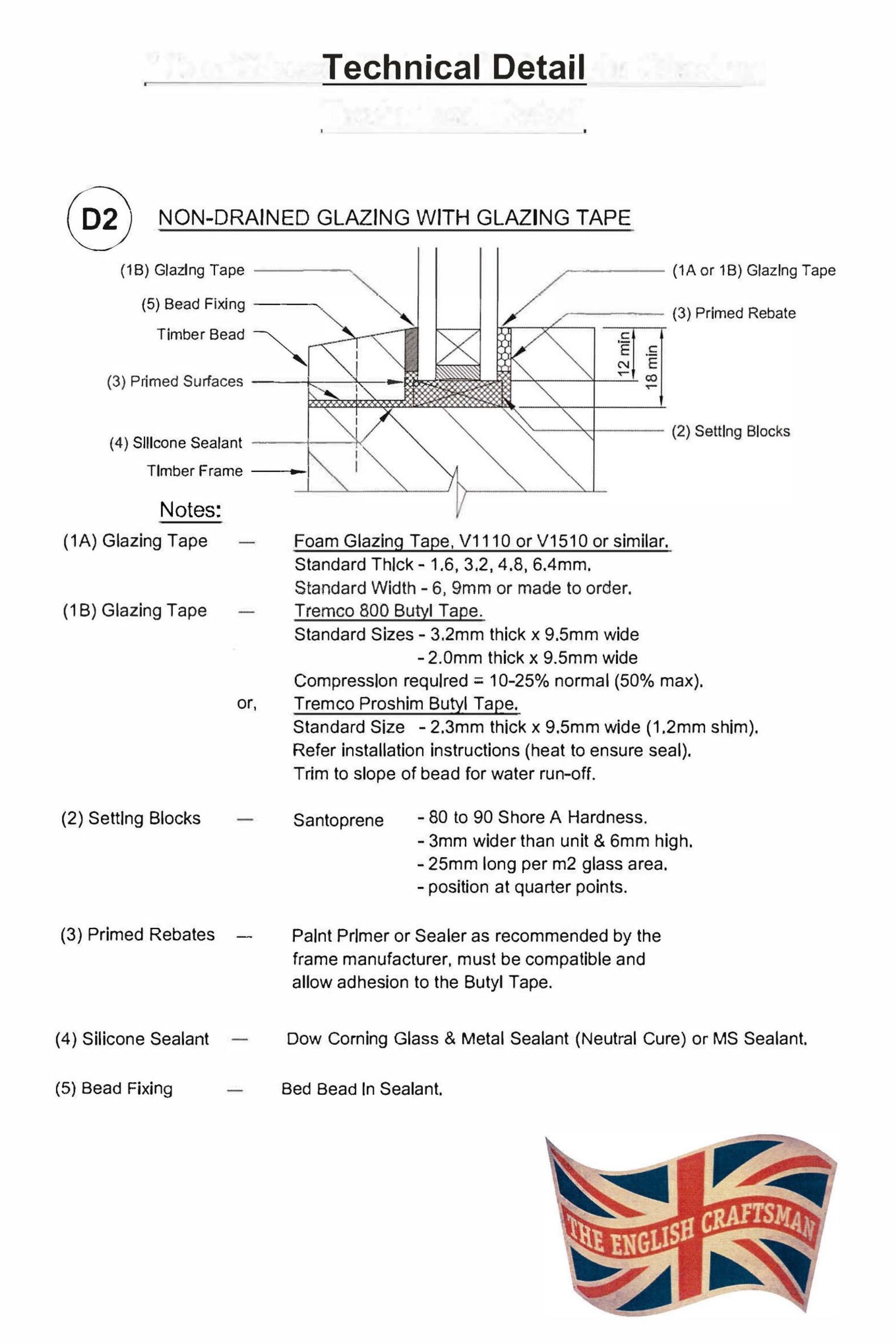Why the non-drained method of double glazing timber windows is ideal for historic and older homes

Why the Non-Drained D2 Method of Double Glazing is Ideal for Older Homes
Double glazing has become a popular upgrade for homeowners seeking to enhance energy efficiency and comfort. However, when it comes to older homes, selecting the right glazing method is crucial to maintain both the aesthetic and structural integrity of the building. The non-drained D2 method of double glazing stands out as an ideal solution for heritage or period properties. In this article, we explain what the non-drained D2 method is and why it offers distinct advantages, particularly for older homes.
What is the Non-Drained D2 Method?
The D2 method refers to a style of double glazing that uses sealed units between two panes of glass to create an insulated glass unit (IGU). This IGU traps a layer of air or inert gas (such as argon) between the panes to significantly improve thermal insulation. The "non-drained" aspect of the D2 method means that the window unit is fully sealed, with no drainage channels for water runoff. This minimizes the risk of water ingress from the outset, as opposed to traditional systems that rely on channels to manage moisture.
Key Benefits of the Non-Drained D2 Method for Older Homes
- Preservation of Original Aesthetics
Many older homes are valued for their unique architectural details, especially when it comes to original windows. The non-drained D2 method enables a more discreet installation, as it doesn’t require bulky drainage systems that alter the appearance of the frame. This ensures that the aesthetic appeal of the home remains intact, allowing homeowners to maintain the charm and character that define period properties.
- Avoids Problems Caused by Drainage Channels
In many modern drained double glazing systems, plastic drainage channels are often pinned to the rebate (the groove in the window frame that holds the glass). These channels are designed to direct water away from the glazing, but over time, they can harbor moisture, leading to rot—especially in older timber frames. Once moisture builds up, it can cause significant damage to the window frame and surrounding structure, eventually compromising the window’s integrity. The non-drained D2 method eliminates this risk by sealing the window unit completely, making it a far more suitable option for older homes where maintaining the condition of timber frames is essential.
- Superior Moisture Management
Older homes are more prone to dampness due to aging building materials and less advanced construction methods. The non-drained D2 method offers superior moisture management because its sealed design prevents water from entering the unit in the first place. This dramatically reduces the risk of rot, mold, and damage to older, more delicate frames. By avoiding drainage channels that may trap moisture, this method provides an extra layer of protection for heritage properties.
- Improved Energy Efficiency
One of the primary reasons to install double glazing is to improve the home’s thermal efficiency. Older homes, which typically suffer from poor insulation, can lose a significant amount of heat through traditional single-pane windows. The non-drained D2 method offers excellent thermal performance by eliminating the drainage gaps that can allow cold air to penetrate. This helps maintain consistent indoor temperatures, leading to reduced heating and cooling costs, while keeping the original design intact.
- Lower Maintenance Requirements
The non-drained D2 method also requires less maintenance compared to drained systems. In drained systems, drainage channels can become clogged with debris, leading to water buildup and potential damage to the window frame. With the non-drained method, there are no channels to clean or maintain, reducing the need for regular upkeep. This is especially beneficial for older homes, where accessibility and preserving original materials are often a concern.
- Noise Reduction
Older homes, particularly those located in urban areas or near busy roads, can benefit from the non-drained D2 method's superior noise reduction capabilities. The completely sealed design of the window unit helps block external noise more effectively than traditional single-pane windows or drained systems, making the home quieter and more peaceful.
- Extended Lifespan
Given the care required to maintain older homes, investing in long-lasting upgrades is crucial. The non-drained D2 method, with its sealed design, tends to have a longer lifespan than drained systems that rely on water management through drainage channels. By reducing the risk of water damage and frame deterioration, this method offers greater durability and longevity—making it an ideal long-term solution for period properties.
Things to Consider
While the non-drained D2 method has many advantages, there are a few points to consider:
- Professional Installation is Essential: The success of the non-drained D2 method relies on expert installation. For older homes, which often feature uneven or non-standard window frames, it’s important to work with experienced professionals who specialize in period properties. Proper fitting and sealing are crucial to avoid gaps that could undermine the glazing’s performance.
- Initial Cost: The non-drained D2 method may have a slightly higher upfront cost compared to drained systems. However, this cost is offset by the reduced maintenance, longer lifespan, and improved energy efficiency, making it a cost-effective choice over time.
Conclusion
The non-drained D2 method of double glazing is an excellent solution for older homes, offering a perfect balance between modern energy efficiency and respect for traditional architecture. By avoiding the moisture problems caused by drainage channels, providing superior thermal and noise insulation, and requiring less maintenance, it’s an ideal choice for homeowners looking to preserve the beauty and integrity of their period property while upgrading its comfort and performance.

